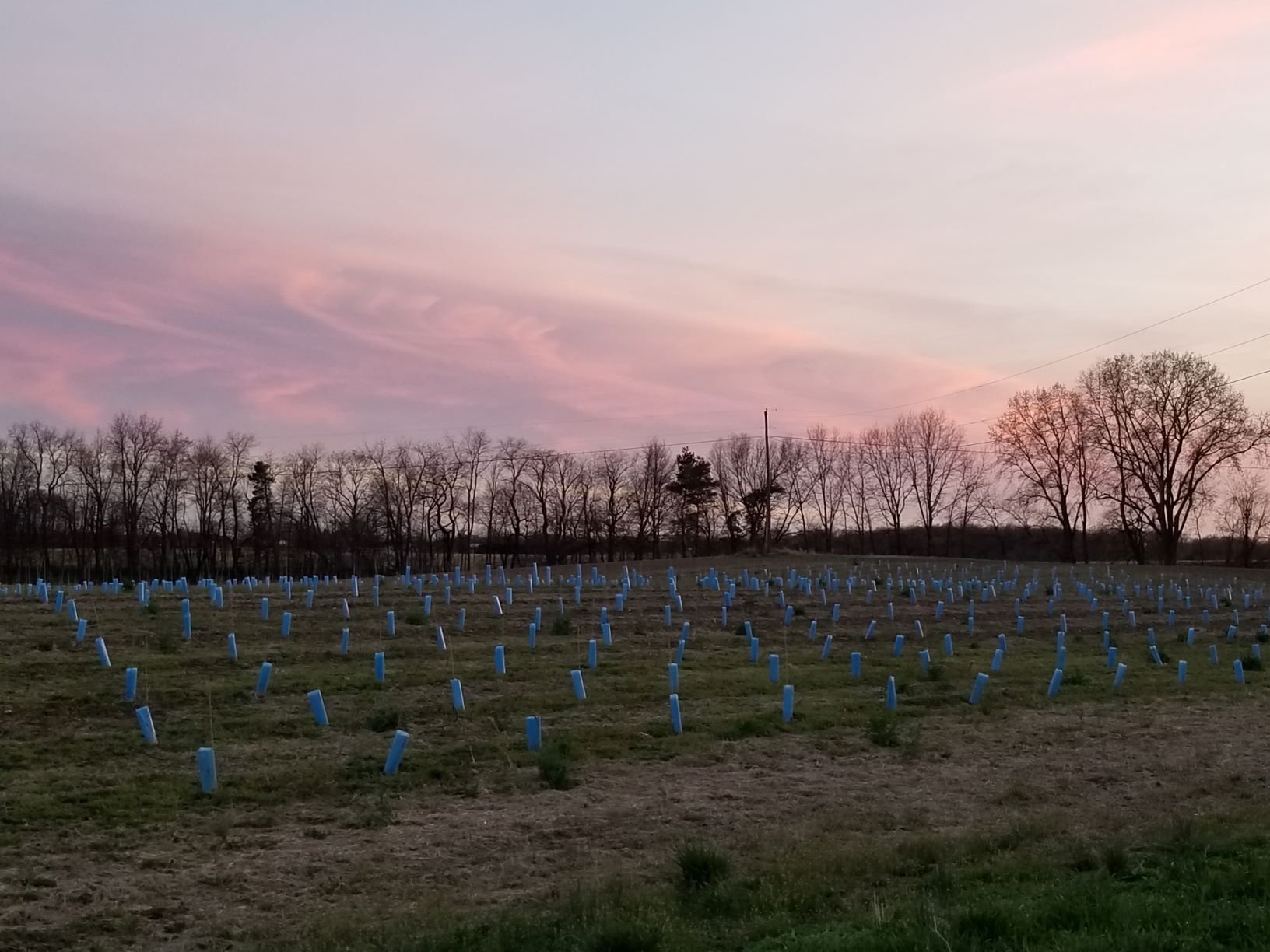Dr Dave Miller featured on If Vines Could Talk podcast
Click on the link to listen to an interview with host Steve Salisbury and Dr Dave Miller as they discuss viticulture science.
Spring 2025 Happenings in the Vineyard

White Pine Early Spring News
The first of March is the beginning of meteorological spring. March wind comes in like a lion and goes out like a lamb, to paraphrase an old adage. March is also the time when we must get our vineyards pruned and ready for the growing season ahead. Pruning looks easy and logical when you see someone who knows how to do it. But have you ever thought about why and how pruning is done?
Pruning is the primary means for controlling crop on grapevines. All of the canes from last year’s growth have the potential to produce flower clusters and fruit. If no pruning was done, the vines would produce too much crop which would fail to ripen and produce bad wine if it were used. It would also limit the vines’ ability to harden off for the following winter setting the stage for a bad, low crop season to follow the large crop. By removing most of last year’s canes, we are also removing most of the cropping potential and only leaving what the vine can mature. Now that we understand the “why” of pruning, let’s have a look at “how” we prune.
Spring News From the Vineyard and Winery
We’re having a Spring White and Rose’ SALE just in time for warmer weather! We are offering 10% off 4 bottles; 15% off 6 bottles and 20% off 12 or more bottles, mix and match (does not include Effervescence or Ice Wine). Our award winning white and rose’ wines are perfect with summer foods or by themselves on the deck with friends. Take this opportunity to fill your wine rack with White Pine whites and Lady Slipper Rose’
White Pine is open daily for wine tasting and we have some great wines for you to enjoy! Our newly released 2021 Reserve Cabernet franc; 2022 Reserve Teroldego and our 2022 Dry Riesling. Each wine demonstrates the beautiful varietal character developed by these grapes in our Michigan climate. The reds show intense deep ruby red color, great length on the palate and a broad range of flavors derived from the grapes, the fermentation process and aging for 12 months in French Oak barrels. Our white wines show bright, forward fruit in the aroma and on the palate. Crisp acidity perfectly balances these wines and makes them great for sipping with a meal or on the deck or patio.
Vineyard News:
Winter was mild with one cold snap in January. That one cold snap damaged buds on vinifera vines throughout southwest Michigan (e.g. Riesling, Cabernet franc, Merlot, Chardonnay) so there will be a small crop at best on those varieties. Our resistant hybrid varieties like Chambourcin, Marquette and Traminette should make a good crop. There is still a risk of frost through Mother’s Day so our fingers are crossed that the buds are able to open after the last frost!
Winery News:
In the cellar we are preparing to bottle our 2022 vintage whites and rose’. Muscat Ottonel, Pinot grigio, Reserve Riesling, Traminette and Lady Slipper Rose’ will be bottled soon with Dry Riesling and Chardonnay still aging on their lees in barrels for added complexity and depth. The 2023 reserve red wines will continue resting in barrels and going through what the French call ‘elevage’ or an “elevation” from coarse, young wines to elegant, refined wines. The 2022 reds were bottled in January and are aging in bottles before being released.
Our current releases of wines are receiving rave reviews from our customers. Taste them yourself and see what all the fuss is about!
Upcoming Events
Antiques on the Bluff: First Sunday of the month May through October
Memorial Day Parade: Friday, May 24th, 12:00 pm.
St Joe Farmer’s Market: Saturdays May 25th through October 12th, 9:00 am – 2:00 pm.
Lake Bluff Artisan Fair: Saturday June 1st, 10:00am – 3:00pm.
Maker’s Trail Festival: Saturday June 8th, Weko Beach, Bridgman, MI 1:00 – 7:00 pm.
Friday Night Concert Series: Fridays July 14th – September 1st, 7:00 – 8:00 pm. Bandshell
Retail Locations & Restaurants
Our wines can be purchased at these retail locations:
Liquour Locker - St. Joseph, MI
Liquor Cabinet - St. Joseph, MI
Total Wine & More - Grand Rapids, MI
Total Wine & More - Ann Arbor, MI
Total Wine & More - Sterling Heights, MI
Total Wine & More - Novi, MI
Total Wine & More - Rochester Hills, MI
And these fine restaurants:
Bistro on the Boulevard - St. Joseph, MI
Clementine's Too, St. Joseph, MI
Tello's - South Haven, MI
Tim's Too, St. Joseph, MI
Spring in the Vineyard
It's spring time! TIme to finish pruning the bearing vines and get the young vines ready for the growing season. We cut back the vines to 4 or 5 buds at the base in their 2nd season so they can grow a strong shoot that will become the trunk for the new vine. The grow tubes protect the new growth from wind, deer and weed sprays. Very soon we will build the trellis for these vines. Stay tuned as we show you their progress this year!
